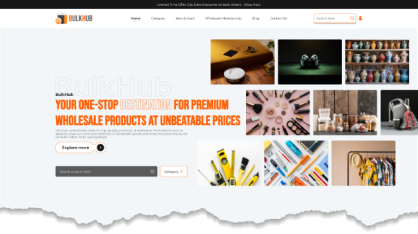One of the benefits of building pages and posts with Gutenberg Blocks is the capacity to keep them as templates. Creating templates for Gutenberg is a brilliant manner to assist accelerate the publishing process. There are numerous methods to create them. In this article, we’ll see a way to create WordPress Gutenberg block templates. Create awesome websites with our premium WordPress themes.

We’ll Cover 3 Strategies For Developing Them:
- Creating a format to feature for your Gutenberg library to export or clone.
- Creating a format to replicate and paste while you need to apply it.
- Creating a format to feature because the default format for pages, posts, or custom publish types.
These strategies allow us to reuse the blocks only. No different settings can be included. Also, make your business Website famous with our Famous WP Themes with all the demanding features.
Why Create WordPress Gutenberg Block Templates
Once you’ve designed your web page or post format you may save the listing of blocks with their attributes to reuse. This offers you a head start on developing your content material due to the fact you don’t need to be conscious of the format. Block templates let you have a steady design.
The block template could have placeholder content material. They may be static or dynamic. You can outline the default state of an editor session. You may even import or export your templates as JSON files so that you can reuse your designs on a couple of websites or proportion them with others. You can lock them so customers can upload content material however now no longer change the blocks.
WordPress 5.x is today's model of the world’s most famous CMS. An exciting feature of the new edition is the Gutenberg Editor that is poised to revolutionize the manner WordPressers create content material at the platform. At least this is a reliable model!
Regardless of what you sense about the Gutenberg editor, it's crucial to comprehend that this editor isn't going away withinside the coming WordPress releases.
The motive is simple: The “Classic” WordPress editor has begun to reveal its age. In addition, the new generation of customers who are acquainted with editors to be had on different comparable platforms, are extra comfortable with the Gutenberg style editor than the traditional editor.
Getting Get Entry To WordPress Gutenberg Block Templates
To get the trendy on block templates and complete web page editing, you’ll want to set off the Gutenberg WordPress plugin and feature a top-level /block-templates/index.html/ file present inside your theme. This turns on the brand new Site Editor, in addition to allowing block templates and block template elements to feature properly.
You see, issues had been capable of offer templates for pretty an even as, however, block templates are very distinct on primary accounts:
wp Gutenberg block templates are totally composed of — you guessed it — blocks
wp Gutenberg block templates are designed to be a place to begin to construct from
In a world wherein Gutenberg is slowly taking up an increasing number of the WordPress experience, that experience isn't always baked into, nor confined through, a theme. Instead, the WordPress experience is empowered through the theme.
And even as this is a lot to take in, block templates are an immensely effective idea and a good way to level up WordPress themes publishing.
Customizing WordPress Gutenberg Block Templates
Gutenberg editor is primarily based on the concept of ‘blocks’, discrete additives that may be used at will to feature the favored capability to the content. With those Gutenberg blocks, the consumer can easily add adjustable and independently attainable sections that add value for the readers.
Since customization lies in the middle of WordPress, Gutenberg editor helps custom-designed block templates that assist customers to add custom blocks to their CMS.
There are approaches to developing custom-designed Gutenberg block templates. Note that each technique requires a little WordPress improvement knowledge. If you are looking to create a custom product page you can try our Woocommerce Product add ons.
Register WordPress Gutenberg Block Templates
The first technique includes creating custom blocks templates that may be used to construct pre-populated blocks. For this, add the subsequent code to the functions. PHP file.
add_action( 'init', function() {
$args = array(
'public' => true,
'label' => 'News',
'show_in_rest' => true,
'template_lock' => 'all',
'template' => array(
array( 'core/paragraph', array(
'placeholder' => 'Breaking News',
) ),
array( 'core/image', array(
'align' => 'right',
) ),
),
);
register_post_type( 'news', $args );
} );
In the code snippet, the array parameter ‘middle/paragraph’ is accountable for the content material of the block. Similarly, the array parameter ‘middle/image’ lets you add pictures in three ways: Direct add, Selecting from the Media Library and Embedding the usage of a URL.
The ‘show_in_rest’ parameter suggests to the WordPress middle that this traditional block must be capable of being fetched through the WordPress REST API.
The ‘template_lock’ argument, while set to ‘all’, prevents the custom blocks from being added (or removed) to the template.
When it involves including a custom block to this template, use the ‘template’ sub-array. For instance, keep in mind the following snippet.
Create A Gutenberg Plugin
When you are operating with custom template and Gutenberg templates, the excellent practice is to create a custom plugin for the custom Gutenberg Editor plugins.
Like all plugins, this plugin might be positioned in the wp-content/plugins listing that consists of separate folders for all of the plugins set up on the website.
To create the plugin, visit the wp-content/plugins listing and create a brand new folder. The name of the folder has to be the call of the custom Gutenberg template plugin. For the cause of this tutorial, I even named my plugin ‘Gutenberg Blocks’. Thus, the name of the folder might be ‘Gutenberg-Blocks’.
Then In this folder, You will have to create a file name Gutenberg-blocks.php and then the following code to it:
/**
* Plugin Name: Gutenberg Blocks
* Author: Muhammad Owais Alam
* Description: This plugin allows users to add a WordPress Gutenberg custom template for the Gutenberg editor
* Version: 1.0.0
*/
add_action( 'init', function() {
$args = array(
'public' => true,
'label' => 'News',
'show_in_rest' => true,
'template_lock' => 'all',
'template' => array(
array( 'core/paragraph', array(
'placeholder' => 'Breaking News',
) ),
array( 'core/image', array(
'align' => 'right',
) ),
),
);
register_post_type( 'news', $args );
} );
Note that this code is only as a guide and you can change the details to fit into your requirements. When it gets installed, this plugin will appear in the available plugin list.
Gutenberg WordPress Theme Example – Gutenberry
The new distraction-free editor, Gutenberg, has been part of the WordPress center for nearly a year now. However, it was quite difficult to locate a carried out and well-concept Gutenberg theme on the net till Gutenberry got here.
Gutenberg is presently one of the fine 100% Gutenberg-geared-up themes. This minimal theme was created in Gutenberg, bringing you exceptional editing ease and exemplary speed. For example, The Google Speed rates Gutenberry A 97.
This tip-top theme additionally comes with five Homepage designs, all created for present-day blogs with rich media integration. Moreover, Gutenberry gives you tons of Blog and Post layouts, extra than 10 widgets, operating forms, and sturdy social media integration.
Here Are Some Of The Great Features Of The Gutenberg Theme:
- Sample Data Installer
- Lifelong 24/7 Support
- Optimized Source Code
- MailChimp-ready
- Fully Responsive
- Alternative Module Layouts
- 3 Dynamic Blog Layouts
Customizing Gutenberg templates is a tremendous way of customizing the Gutenberg editor for managing custom requirements. As with the entirety of WordPress, the method of creating a custom Gutenberg template is an easy rely of including inline code or setting up a custom plugin.
A block template is an argument. You can upload the argument to pages and posts, or you may create a brand new publish kind. The format can be tied to that publish kind, so while you create that publish kind the format is displayed via means of default.
This is first-rate for creating layouts for exclusive styles of articles. For example, you may have a product review post type, vacation precis post kind, recipe publishing kind, etc., and while you load the publish kind it automatically presents you with the format related to it.
Creating The Template Includes:
- Setting the default state dynamically.
- Registering it because the default format for a selected published kind.
Declaring The Template
The template itself will be declared as an array of block types. This is done with JavaScript or in PHP.
const template = , //
];
Or
'template' => array(
array( 'block/name' ),
),
Registering The Template In Pages And Posts
If you add the template to pages or posts it'll automatically load on every occasion you create a web page or submit. I choose to upload them to precise custom submit sorts due to the fact you've got extra innovative freedom and it streamlines the content material creation technique via ways of making the templates simpler to find.
If you do determine to feature them to pages or posts, you could use this code:
function my_add_template_to_posts() {
$post_type_object = get_post_type_object( 'post' );
$post_type_object->template = array(
array( 'core/paragraph', array(
'placeholder' => 'Add Description...',
) ),
);
$post_type_object->template_lock = 'all';
}
add_action( 'init', 'my_add_template_to_posts' );
Nesting Templates
You may even nest templates inside Container blocks (for example, columns blocks). This is carried out by assigning a nested template to the block itself. For example:
$template = array(
ar
'placeholder' => 'Add a root-level paragraph',
) ),
array( 'core/columns', array(), array(
array( 'core/column', array(), array(
array( 'core/image', array() ),
) ),
array( 'core/column', array(), array(
array( 'core/paragraph', array(
'placeholder' => 'Add a inner paragraph'
) ),
) ),
) )
);ray( 'core/paragraph', array(
Example Template With A Custom Post Type
I need to create the custom post kind referred to as Books that we noticed above. It will show the format template and could consist of an image, heading, and paragraph.
The code could be pasted into the functions. php file. Always use a child theme while including code in the PHP files. If you don’t, the code could be overwritten while you replace the theme.
You’ll need to write the code by hand (I propose the use of the code examples I’ve shown). One choice is to create the format you need after which view the code (click on the three dots withinside the top right corner and choose Code Editor withinside the Editor section).
This will display the blocks with their attributes from the format you’ve already made so that you can recognize in advance of time away to set up the blocks for your code.
You have to then go into theme Functions (functions.php) and then paste the code in it . I pasted the code on the very bottom. This is a check web page and I don’t plan to maintain the code, so I didn’t use a child theme.
A new post type is brought to the dashboard menu referred to as Books. It consists of a listing and an Add New link. I clicked Add New and my new template is brought to the editor wherein I can in reality begin including content.
The blocks are located withinside the order that they seem withinside the code and consist of the attributes they have been assigned. You can surround as many blocks withinside the code which you need and supply them any attributes you need. You can create as many custom publish sorts as you need and everyone will have a completely unique default layout. This instance consists of placeholder text.
Ending Thoughts
That’s our look at the way to create WordPress Gutenberg block templates.
All three techniques work brilliantly. The reusable templates or one of the duplication techniques is probably a higher preference in case you don’t need to create new custom put up sorts. I just like the custom of putting up sorts as it makes it clean to select the form of content material you need to create and the templates are pre-looked after for you.
The custom post types are smooth to make in case you’re comfortable with code and they’re the maximum handy to apply inside WordPress. The foremost downside in developing templates to feature for your functions. The personal home page is that you’re developing the format in code in preference to withinside the Gutenberg editor, so it isn’t visual.
I like that you may add pre-made content material for your templates. This is brilliant for placeholder textual content to reveal to participants what data is going where. Reusable templates are a brilliant manner to speed up and streamline your workflow process, and they’re a brilliant manner to create a web page and put up layouts to share.
Also, if you want more than one theme you can buy our complete WordPress theme bundle which is available at an affordable price of $99.









